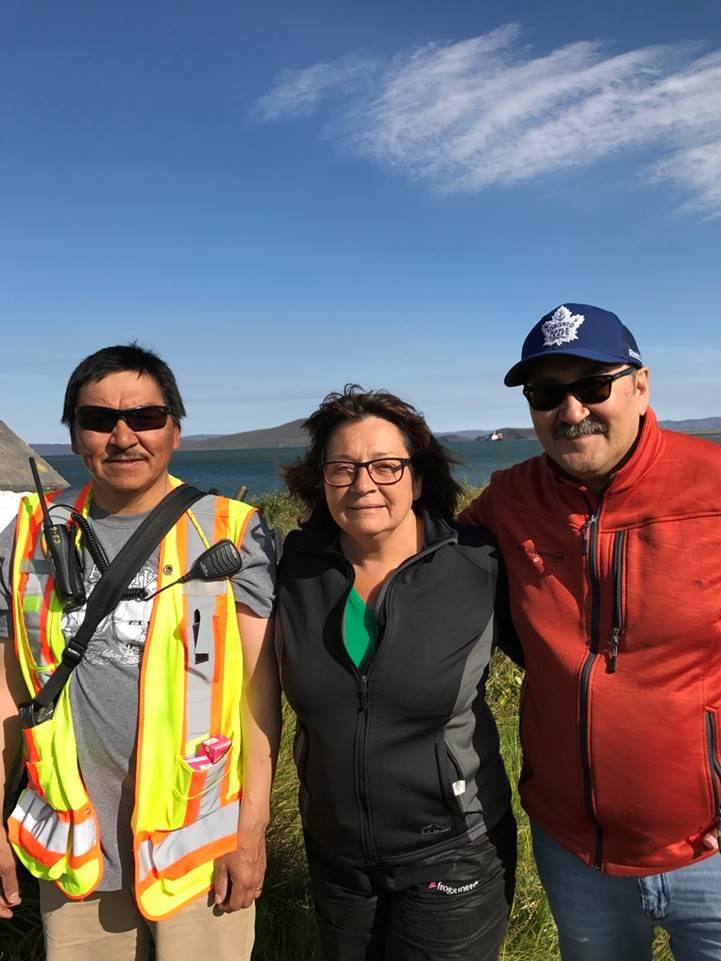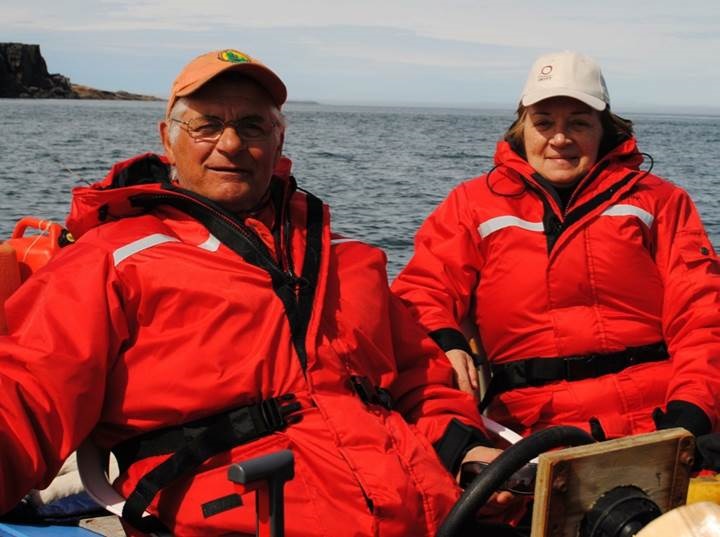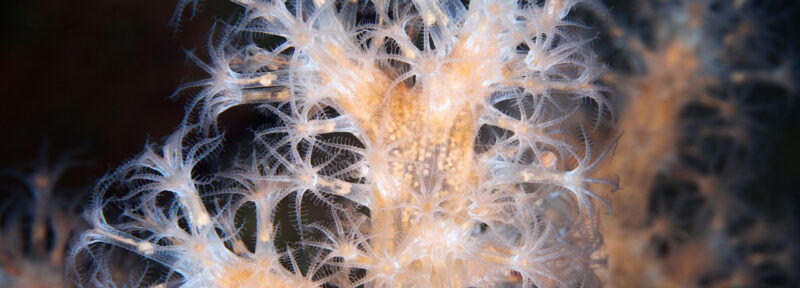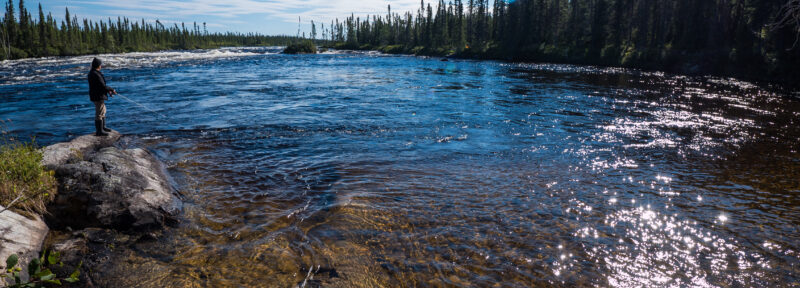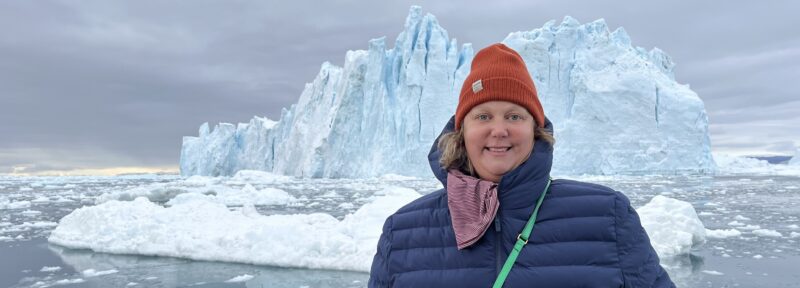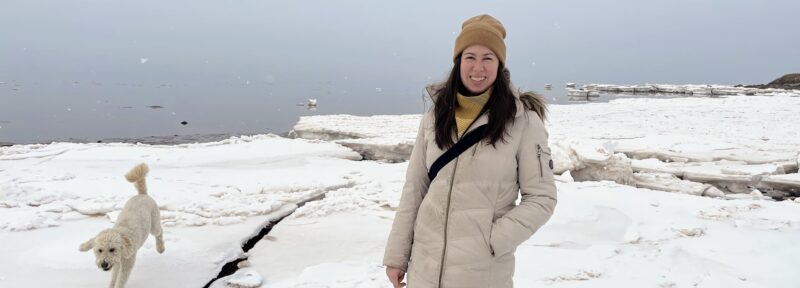Safeguarding the Arctic’s Future
Mary Simon (qitqani) piqatigiya Jaypoody Alivaqtuq (haumiani) tamnalu Kono Tattuinee (taliqpikhiq) talvani Kingaok atuqtitlugu tamna C-3 Aulagiaq 2017-mi.
Ilitariyauyuq: Mary Simon
Growing up in Kuujjuaq, a village near Ungava Bay in Nunavik, Quebec, Mary Simon and her family lived close to the land and sea, relying on both for a healthy diet.
“Not only marine mammals, but mussels, clams and seaweed,” said Simon, a prominent advocate for Inuit rights who was a founding board member of Oceans North and is now honorary chair. “If we didn’t have that, we might have gotten scurvy.”
Traditional foods are still essential to Inuit and protecting the Arctic waters that offer this bounty is one of Simon’s priorities as she begins work with the new nonprofit organization. As climate change opens the North to increased shipping and other commercial activities, this is more important than ever, she said.
“Oceans North can take the lead on supporting indigenous protected areas for traditional use,” she said. “I feel very strongly about those being safeguarded.”
Simon, who now lives in Ottawa, has had a long, distinguished career working on behalf of Inuit, including the release of a major report earlier this year as the Minister’s Special Representative on Arctic Leadership, six years as president of the national Inuit Tapiiriit Kanatami, and many other senior leadership positions, including president of the Inuit Circumpolar Council (ICC) and Canada’s first Ambassador for Circumpolar Affairs. She retired from public life in November 2017.
She’s passionate about the need to improve education for Inuit, and her recent report on the Arctic, which discussed both sustainable conservation and socio-economic issues, recommended that a task force be established to develop an Arctic University. In September, Simon and Louie Porta, vice president of operations for Oceans North, convened a round table to facilitate next steps.
“We want an Inuit organization to take the lead on this so that it meets the needs of the people,” she said.
When she visits the Arctic now, she’s struck by the dramatic impacts of climate change, from houses damaged by melting permafrost to longer summers and more extreme weather. Adapting to these changes is a challenge for Inuit communities and others, she said.
More infrastructure is needed in the Arctic to ensure the safety of those traveling by sea, including the large cruise ships that carry thousands of passengers each summer, she said. “We need a monitoring system for marine areas with increased shipping.”
Mary Simon uingalu Whit Sheard aulaqniani ikauplugu Ungava Bay, Nunavik.
Ilitariyauyuq: Mary Simon
Partnerships between organizations like Oceans North and Inuit can help achieve these goals, she said. “Building relationships with northerners must be a priority. Partnerships have to go both ways and involve Inuit from when the proposal is first developed.”
Looking back over her career, one of her proudest achievements was helping organize the ICC, an international organization that today represents about 150,000 Inuit across the Arctic.
“We were a young bunch of Inuit. We had to take on these humongous responsibilities. And we had to do it right,” she said.
Inuit from Canada, Greenland and Alaska were the first to join the ICC. In 1987, Simon, then president of ICC, traveled to Chukotka in the Soviet Union to talk to Inuit there about becoming members. During that trip, she was shocked at their terrible living conditions in Siberia. “We thought we had it tough,” she said. And to complicate matters, the KGB followed her everywhere. “Even when I went to the bathroom, they sat by the door.” When Russian Inuit joined the ICC in 1992, Simon was thrilled. “Bringing Inuit together in an official way was a big one for all of us.”
Today, Simon revels in life’s more ordinary pleasures: spending time with her ten grandchildren, who range in age from two years old to 27. In February, another baby will arrive. “My best times are when I’m with them,” she said. “And I love babies.”
Ruth Teichroeb is communications director for Oceans North.

